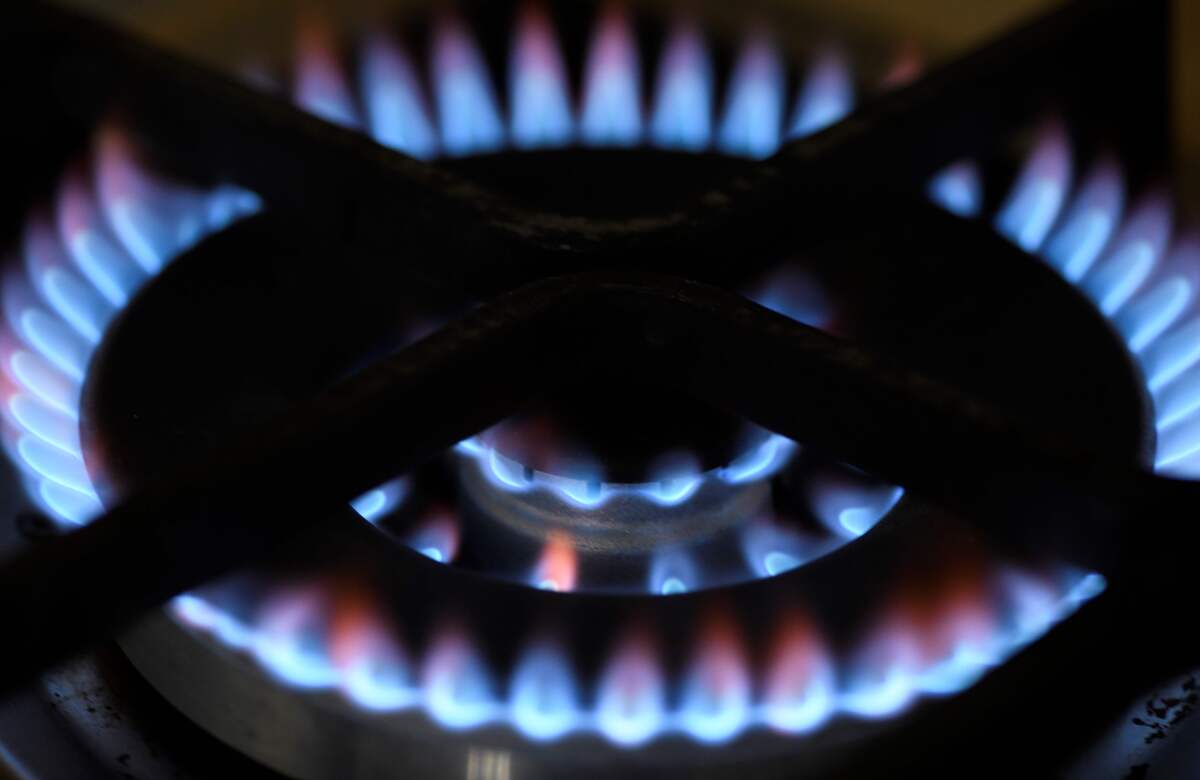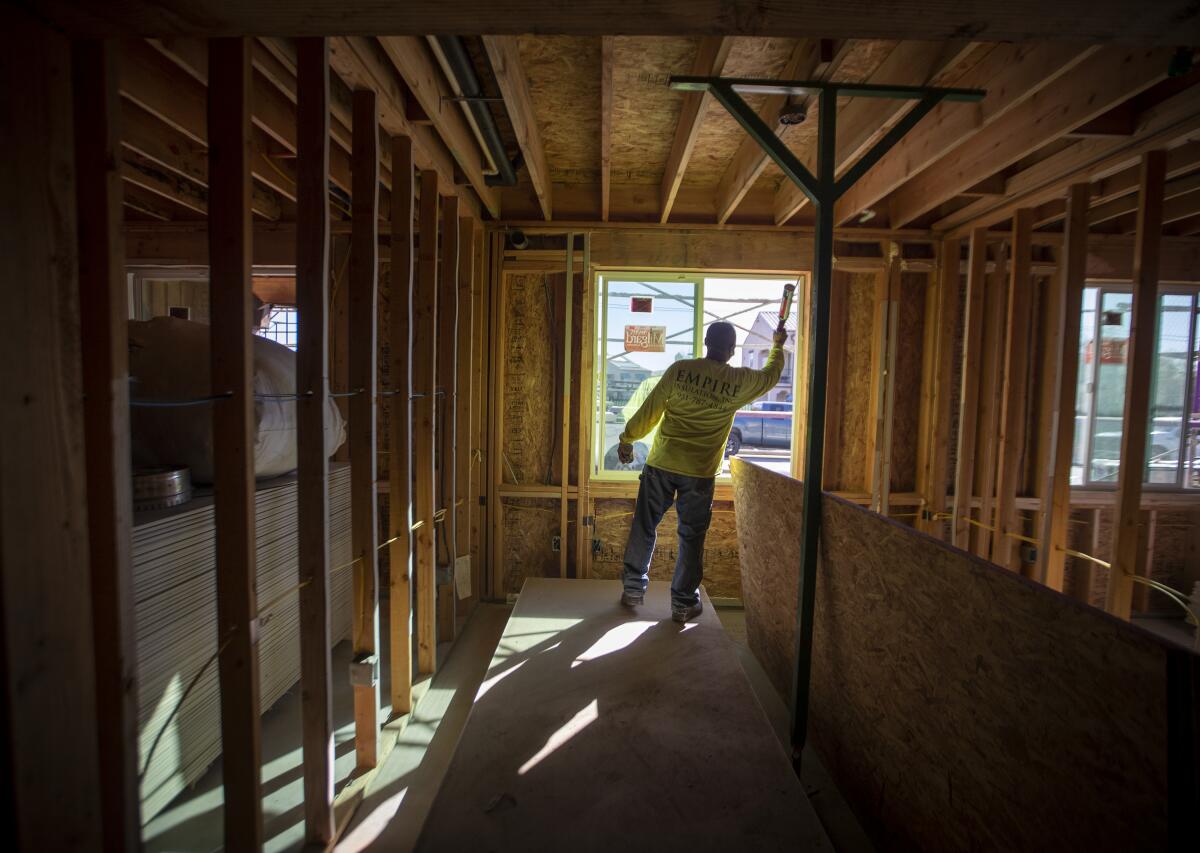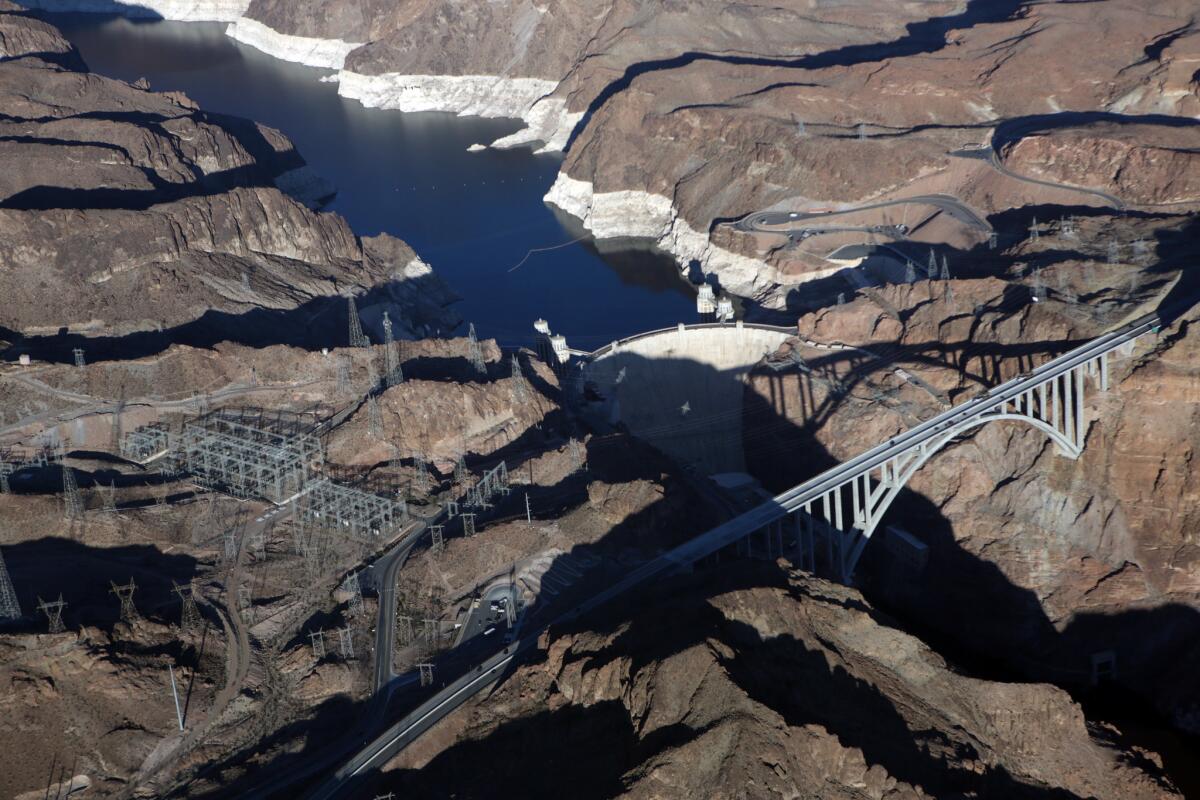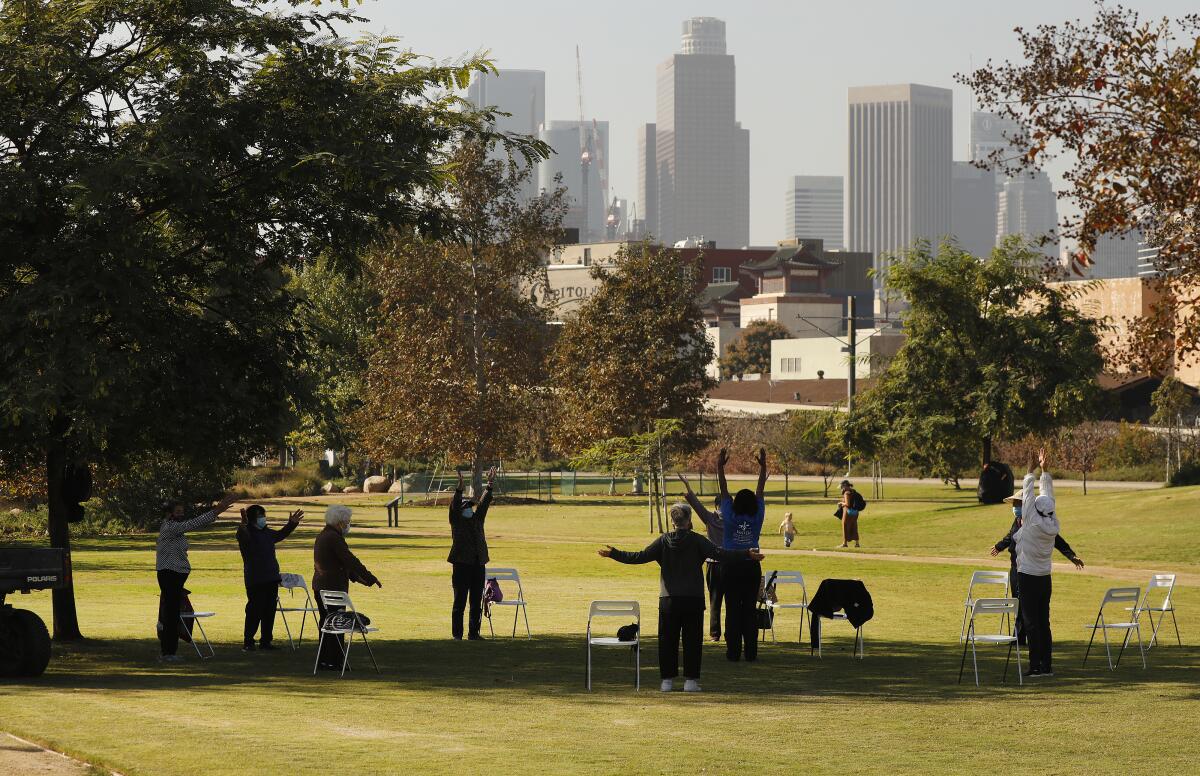Boiling Point: It’s been a wild ride for the natural gas industry. What comes next?

This is the Dec. 3, 2020, edition of Boiling Point, a weekly newsletter about climate change and the environment in California and the American West.
The last 15 years have been a wild ride for the U.S. natural gas industry. Hydraulic fracturing, better known as fracking, helped spur a production boom that led to gas displacing coal as the country’s top power source. Major environmental groups touted gas as a relatively clean fuel that would help bridge the gap between coal and renewable energy, before concluding gas is too dirty to support and launching aggressive campaigns to get rid of it.
Toward a more sustainable California
Get Boiling Point, our newsletter exploring climate change, energy and the environment, and become part of the conversation — and the solution.
You may occasionally receive promotional content from the Los Angeles Times.
As an energy and climate reporter, I’ve covered these stories aggressively, writing about the challenge of phasing out gas-fired power plants and the growing push for all-electric homes that don’t have gas heaters or stoves. I’ve explained how Joe Biden’s plan for 100% clean electricity could spell trouble for gas companies, and how increasingly low-cost solar power has sometimes out-competed gas. I’ve read about mounting scientific evidence of the fuel’s climate and health consequences.
I’ve also worked to understand the gas industry’s case for itself, especially as I’ve written stories scrutinizing efforts by the nation’s largest gas utility, Southern California Gas Co., to protect its business model.
A few weeks before the November election, I called Richard Meyer, managing director of energy analysis at the American Gas Assn., an industry trade group. He’s a well-known presence on Energy Twitter (yes, it’s a thing), and he grew up in Los Angeles.
We had a lively discussion, including on the hot-button topic of local governments prohibiting natural gas hookups in new construction. (Oakland became the latest city to pass such a ban this week, and San Jose expanded its existing ban.)
The following highlights from our conversation are edited and condensed for clarity.
ME: What role does gas play in powering the U.S. economy today, and how has that changed since the rise of fracking?
MEYER: Natural gas served a quarter of total U.S. energy consumption in 2000. By 2019, it was 32%. Where has that change come from? Certainly the incredible rise in natural gas as a fuel for electric power generation. Fourteen percent of all power came from natural gas in 2000. At the end of 2019, it was 31%.
We’ve seen natural gas’s role growing from about 27% of total industrial energy demand in 2000 to 32% today. In the residential sector, we use about the same amount of natural gas today as we did in 1970, despite adding 33 million customers to the system. That’s due to efficiency — lower use per customer, tighter building envelopes, more efficient appliances.
ME: Power plant emissions have falling steadily since around 2005. To what extent has that been driven by gas replacing coal, compared to adding more renewable energy to the grid?
MEYER: The majority of emissions reductions have been from coal-to-gas switching. The relative contribution of renewables has been growing over time. As of 2018, renewables and gas were fairly similar in terms of their contributions.
The role of renewables will continue to increase. But there’s still significant potential for coal-to-gas switching. And there is a lot greater potential to support emissions reductions by using gas more efficiently, more flexibly. As we see new plants built, they displace less-efficient plants that would have higher carbon emissions. Battery systems, as they’re integrated into the grid, will work in tandem not just with renewables but also with gas plants to drive down emissions.
ME: Climate scientists say we need to cut emissions roughly in half over the next decade, then reach net-zero emissions by midcentury, to keep global warming below 1.5 degrees Celsius. Even if gas is less polluting than coal, how is continuing to invest in gas infrastructure compatible with that future?
MEYER: Investments made today are sometimes used differently in the future, sometimes repurposed. I don’t think it’s a fair statement that investments in gas infrastructure today are inconsistent with a significantly lower-carbon energy economy.
If we constrain ourselves to a future of only looking at outcomes that achieve 1.5 degrees, there’s a lot we’re doing today that won’t exist in the future. Maybe there are other goals we need to account for as well. Gas utilities are working every day to make sure their systems are safe, that they maintain reliability of energy for their customers, that the energy they deliver is affordable.
Residential natural gas consumption accounts for about 250 million metric tons of carbon dioxide emissions per year in the United States. That’s equivalent to about two weeks of Chinese coal emissions. Yes, this industry is committed to reducing emissions. But I think we need to understand the context here, which is that this is a global challenge.
ME: You talked about today’s infrastructure being used differently in the future. I imagine one change you’re thinking about is renewable fuels replacing fossil gas. How realistic is it to expect those fuels to come though on a large scale?
MEYER: I see nothing but potential in terms of renewable natural gas and other biogases, and hydrogen produced from zero-carbon power. With a long enough investment and time horizon, there is real potential for these green gases to contribute to significant carbon reductions.
ME: Forty cities and counties in California have now approved policies requiring or encouraging new homes and businesses to be all-electric. Do you see electric appliances as a serious competitor to gas?
MEYER: California is the most populous state. It is also the state that has added the most natural gas customers over the past 10 years. It’s growing because it’s a desirable fuel. People want to build with it, people want to cook with it. People like using it because it provides comfortable heat affordably.
There are other reasons people might choose an electric heat pump or an induction stove, or a propane barbecue, or a coal grill. Consumer preferences change over time and are shaped by factors including price. That value proposition might include an environmental footprint.

ME: I’ve seen gas utilities in California and other states pushing back against electrification mandates. So they must be at least somewhat concerned, right?
MEYER: A question I have is, are these policies reinforcing consumer trends? And if not, what happens if I want to build a home with natural gas, and I’m told I cannot? What happens when I reply that it’s the fuel my family has always cooked with, and it’s a lot less expensive for me to use? I think there are legitimate concerns about taking options off the table as we work to address greenhouse gas emissions.
If we’re requiring all-electric, are we requiring all homes to purchase the most expensive heat pump water heater? Maybe so. But that adds additional cost to the builder, or to the consumer.
ME: I think the activists and government officials supporting these policies see electrification as more of a sure bet for reducing emissions, compared to continuing to invest in gas infrastructure and waiting to see if fossil gas can be fully replaced with renewable fuels. There’s still plenty of uncertainty surrounding those fuels.
MEYER: There’s an unfortunate conceit that widespread electrification of buildings is an easy solution. And I don’t agree with that.
When we run the numbers on what it takes to replace hundreds of billions if not trillions of dollars of gas infrastructure with electricity, that actually becomes a very difficult proposition. The natural gas system delivers three times as much energy on the coldest day of the year than the electricity grid does on the hottest.
Also, if you’re not using gas infrastructure anymore, what do you do with it? Who pays for that? If you have one part of a state that is electrifying everything and other parts of a state don’t wish to electrify everything, are we simply transferring those costs? That has to thought about very critically.
::
Here’s what else is happening around the West:
TOP STORIES
“At the heart of this $73-million project is a reckoning over what is worth saving — and what is worth sacrificing — and whether it’s possible to redesign a treasured landscape so that it survives into the future.” My colleague Rosanna Xia wrote a fascinating and important story about a long-planned, now-approved project to relocate 0.7 miles of highway along a crumbling stretch of the scenic Sonoma Coast. It’s a preview of the challenges and opportunities to come as the Pacific continues to rise.
In this week’s most maddening story, Liam Dillon reports that three years after fires ravaged Northern California, low-income renters are still waiting for relief funds. Without those funds — delayed by federal and state bureaucracy — many fire victims can’t afford to rebuild their homes. Meanwhile, we’ve currently got red flag conditions in Southern California and no rain in sight — in December, no less. Southern California Edison said it might shut off power to as many as 270,000 customers to limit the risk of ignitions, Alejandra Reyes-Velarde and Joseph Serna report. San Diego Gas & Electric, too, warned of possible shut-offs.
Kids with asthma may be suffering long-term lung damage from breathing wildfire smoke. The New York Times’ Somini Sengupta profiled five California families doing their best to protect their children, with a focus on the Central Valley, where the air has been especially bad this year. A Stanford professor of medicine who’s studying the health effects of sharp spikes in pollution told Sengupta her research has found that breathing wildfire smoke is associated with genetic changes in kids’ immune cells.
Enjoying this newsletter? Consider subscribing to The Times
Your support helps us deliver the news that matters most, and makes newsletters like Boiling Point possible. Become a Los Angeles Times subscriber.
POLITICAL CLIMATE
When government officials have bad news, they often announce it on a Friday afternoon or right before a holiday. That’s how the California Department of Finance handled an audit finding the state’s oil regulator, CalGEM, ignored its own regulations and improperly allowed hundreds of new wells, as Janet Wilson reports for the Desert Sun. The audit was released just before Thanksgiving. Kudos to Janet, who joined the Desert Sun shortly after I left and has done a great job holding CalGEM accountable.
As the pandemic worsens and the economy continues to suffer, many Californians are unable to pay their energy bills. The San Diego Union-Tribune’s Rob Nikolewski reports that the number of San Diego Gas & Electric customers more than four months behind on their bills has increased by 22% since February. The increase is even higher among Pacific Gas & Electric and Southern California Edison customers. Some good news: State officials ordered a moratorium on utility disconnections that lasts until April.
One of the biggest obstacles to California meeting its climate goals: Almost no matter where you try to build a solar farm, someone will object. I’ve written about this phenomenon before. This week the San Francisco Chronicle’s J.K. Dineen offered an example, writing about Livermore Valley residents fighting a proposal for the Bay Area’s largest solar and battery storage facility, which they say would threaten native species and the area’s rural character. In Nevada’s Moapa Valley, residents say an even bigger solar-plus-storage project would limit land for off-roading and hurt tourism, per the Nevada Current’s Jeniffer Solis.
AROUND THE WEST

Western states are once again staring down water shortages as Colorado River flows decline and reservoir levels fall. The Arizona Daily Star’s Tony Davis wrote about the latest projections from the Bureau of Reclamation, which show Lake Mead falling to shortage levels at the end of next year. Those numbers are no surprise given how hot and dry the West has been lately. High Country News’ Jonathan Thompson compiled 20 stunning data points showing how climate change is affecting the region.
California typically requires homes that burn in wildfires to be rebuilt with fire-resistant materials. But many other Western states don’t, often because of homebuilding industry pushback. That’s the key takeaway from this story by NPR’s Lauren Sommer.
How safe is the water off the coast of the San Onofre nuclear plant? At this point, all signs suggest it’s safe. But now that the shut-down plant in San Diego County is being decommissioned, wastewater with low levels of radiation is once again being released into the Pacific, and the Surfrider Foundation is teaming up with the Woods Hole Oceanographic Institute to test the water quality in the surrounding ocean, Rob Nikolewski reports for the San Diego Union-Tribune. The facility is operated by Southern California Edison.
INDIGENOUS STORIES
The Hopi people have fostered a deep spiritual connection to the corn they’ve grown for centuries, relying on rain to irrigate their crops in the dry desert southwest. Now climate change is making the tribe’s lands in northeastern Arizona even drier, threatening the Hopi way of life, as Ian James explores in a deeply reported story for the Arizona Republic. “The land actually owns us,” one tribal member said. “We don’t own land. We don’t own water. It owns us. Because without it, we can’t survive.”
In the Pacific Northwest, the lives of the Nez Perce people and Chinook salmon have been intertwined for millennia. That’s why the tribe has been fighting for decades to remove four dams on the Snake River, as Lynda V. Mapes reports for the Seattle Times. “In many tribal members’ lifetimes, dams have transformed the Columbia and Snake from wild rivers to a hydropower behemoth and shipping channel — despite fishing rights reserved by their ancestors guaranteed in the treaty of 1855,” she writes.
Off the coast of Washington, an ancient people crafted a modern climate strategy. As warming waters, increased flooding and other effects of climate change diminished the salmon and shellfish upon which the Swinomish people had long depended, the tribe developed a climate action plan that looks beyond the concerns of today, as Jim Morrison reports for the Washington Post. For instance, the tribe’s climate strategy emphasizes community health, which “goes beyond typical morbidity and mortality measures and considers ecosystem health, social and cultural beliefs, and values integral to a community,” Morrison writes.
ONE MORE THING

A proposal to build an aerial gondola from Union Station to Dodger Stadium in downtown Los Angeles has generated controversy among fans of Los Angeles State Historic Park. The gondola is designed to reduce traffic and air pollution around the stadium, but its route would run directly over the park, diminishing views and serenity, my colleague Louis Sahagún reports.
Having spent plenty of time sitting in traffic at Dodger Stadium myself, I can see the virtues of the gondola. But there’s already free bus service from Union Station. That became my preferred mode of transit to Dodgers games before … well, you know.
And considering the gondola company is funded by former Dodgers owner Frank McCourt — who infamously bankrupted the Dodgers while allegedly extracting $189 million from the team for personal use — my guess is the gondola never happens.
We’ll be back in your inbox next week. If you enjoyed this newsletter, please consider forwarding it to your friends and colleagues.




